China Tea
The Origin of Chinese Tea
 The Story of Chinese Tea
The Story of Chinese Tea
The Sage of tea - Lu Yu
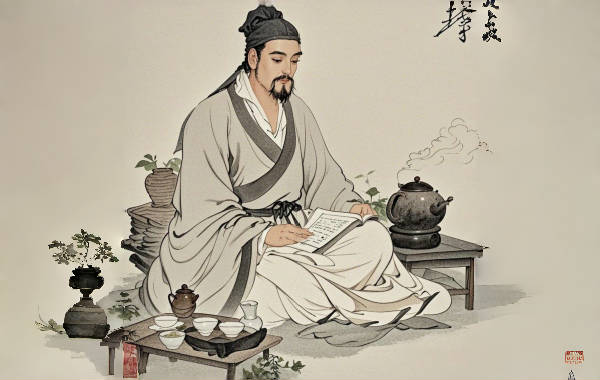
Lu Yu (733-804), known as the "Sage of Tea," was a Chinese scholar and writer during the Tang Dynasty. His seminal work, The Classic of Tea (Chajing), is the first monograph on tea in the world. This comprehensive treatise covers various aspects of tea, including its origin, cultivation, processing, brewing, appreciation, and cultural significance.
The Classic of Tea elevated tea from a mere beverage to a cultural symbol. It emphasized the importance of tea in promoting physical and mental well - being, fostering social interactions, and expressing aesthetic sensibilities. Lu Yu's work spread widely, influencing Tea Culture not only in China but also in neighboring countries such as Japan and Korea. His legacy continues to inspire tea enthusiasts around the world to this day.
The Cultivation of Tea Trees
The earliest recorded cultivation of tea trees in China can be traced back to Mengding Mountain in Sichuan Province. With its unique geographical location and favorable climate conditions, Mengding Mountain provided an ideal environment for tea tree growth. The local people began to domesticate wild tea trees and cultivate them on a large scale, gradually developing advanced cultivation techniques.
Over the centuries, tea cultivation spread from Mengding Mountain to other parts of China. Farmers learned to select suitable tea tree varieties according to different soil and climatic conditions, and they also developed various methods of fertilization, pruning, and pest control to ensure high - quality tea leaves. Today, tea trees are widely cultivated in many provinces across China, forming a diverse and rich tea production landscape.
The Promotion of Tea
During the Tang and Song dynasties, tea became an important commodity in China, and its promotion reached a new height. One of the most notable examples is the production of "Longtuan Fengbing" (Dragon and Phoenix Cake Tea) in the Song Dynasty. These compressed tea cakes were made from high - quality tea leaves and were often presented as tributes to the imperial court. They were not only a symbol of wealth and status but also played a crucial role in promoting tea culture.
The government also actively promoted tea drinking by establishing tea markets, regulating tea trade, and organizing tea - related activities. Tea houses sprang up in cities and towns, becoming popular gathering places for people to socialize, relax, and appreciate tea. At the same time, tea was introduced to foreign countries through the Silk Road and maritime trade routes, spreading Chinese Tea Culture to the world.
The Six Categories of Chinese Tea
History: Black tea originated in China during the late Ming Dynasty (16th century). It was developed as a result of the oxidation process of tea leaves, which was accidentally discovered when tea leaves were exposed to the air for too long. Initially, black tea was not well - received in China, but it gained popularity in Europe during the 17th century.
Origin: The main producing areas of black tea in China include Fujian, Yunnan, Anhui, and Hunan provinces.
Characteristics: Black tea is fully oxidized, which gives it a dark brown or black appearance. It has a strong and mellow aroma, with a rich and full - bodied taste. The liquor is usually reddish - brown.
Features: Black tea is rich in tea polyphenols, caffeine, and aromatic substances. It has antioxidant, anti - inflammatory, and digestive benefits. It can also help improve mental alertness and enhance physical endurance.
Representative Tea:
Keemun Black Tea (Qimen Hongcha): Produced in Qimen County, Anhui Province. It has a unique floral and fruity aroma, with a sweet and mellow taste.
Yunnan Dianhong Black Tea: Produced in Yunnan Province. It has a golden appearance and a malty aroma, with a strong and sweet taste.
Brewing Method: Use about 3 - 5 grams of tea leaves for every 150 ml of water. The water temperature should be around 95 - 100°C. Steep the tea for 3 - 5 minutes. Black tea can be brewed multiple times, with each infusion offering a different flavor profile.
View more about Chinese Black Tea >>
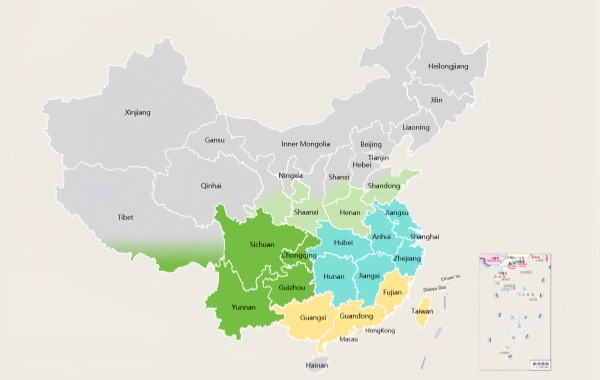
History: Green tea has a long history in China, dating back to the Tang Dynasty. It is made by withering and then heating the tea leaves to prevent oxidation, thus preserving the green color and fresh flavor of the tea.
Origin: The main producing areas of green tea in China include Zhejiang, Anhui, Jiangsu, and Sichuan provinces.
Characteristics: Green tea is non - oxidized, so it retains its green color. It has a fresh and delicate aroma, with a light and refreshing taste. The liquor is usually light green or yellowish - green.
Features: Green tea is rich in antioxidants, vitamins, and minerals. It has anti - inflammatory, anti - cancer, and anti - aging effects. It can also help improve sleep quality and relieve stress.
Representative Tea:
West Lake Longjing (Xihu Longjing): Produced in Hangzhou, Zhejiang Province. It has a flat and smooth shape, with a chestnut - like aroma and a mellow and sweet taste.
Biluochun: Produced in Dongting Mountain, Jiangsu Province. It has a curly shape, with a strong floral aroma and a fresh and sweet taste.
Brewing Method: Use about 2 - 3 grams of tea leaves for every 150 ml of water. The water temperature should be around 75 - 85°C. Steep the tea for 1 - 2 minutes. Green tea is best enjoyed in its early infusions to appreciate its freshness.
View more about Chinese Green Tea >>
History: Oolong tea originated in China during the Qing Dynasty. It is a semi - oxidized tea, representing a middle ground between green tea and black tea. Its production process is complex and requires precise control of the oxidation level.
Origin: The main producing areas of oolong tea in China include Fujian, Guangdong, and Taiwan provinces.
Characteristics: Oolong tea has a partial oxidation, which gives it a unique appearance and flavor. It has a floral and fruity aroma, with a balanced and complex taste. The liquor is usually golden yellow or amber.
Features: Oolong tea is rich in tea polyphenols, amino acids, and aromatic substances. It has anti - oxidant, anti - inflammatory, and digestive benefits. It can also help regulate blood lipid levels and promote weight loss.
Representative Tea:
Tieguanyin: Produced in Anxi County, Fujian Province. It has a granular shape, with a strong orchid aroma and a mellow and sweet taste.
Phoenix Dancong: Produced in Chaozhou City, Guangdong Province. It has a wide range of fragrances, including orchid, osmanthus, and honey, with a full - bodied and complex taste.
Brewing Method: Use about 5 - 7 grams of tea leaves for every 150 ml of water. The water temperature should be around 90 - 95°C. Steep the tea for 1 - 2 minutes initially, and then increase the steeping time for subsequent infusions. Oolong tea can be brewed multiple times, with each infusion revealing different flavor notes.
View more about Chinese Oolong Tea >>
History: Yellow tea is a rare and unique category of tea in China. It originated during the Ming Dynasty as a result of a special processing technique called "menhuang" (sealing yellow), which involves wrapping the tea leaves in paper or cloth to allow them to yellow slightly.
Origin: The main producing areas of yellow tea in China include Hunan, Sichuan, and Anhui provinces.
Characteristics: Yellow tea is slightly oxidized, which gives it a yellow appearance. It has a mellow and sweet aroma, with a smooth and delicate taste. The liquor is usually yellowish - green or golden yellow.
Features: Yellow tea is rich in antioxidants and amino acids. It has anti - inflammatory, anti - cancer, and anti - aging effects. It can also help improve digestion and relieve stress.
Representative Tea:
Junshan Yinzhen: Produced on Junshan Island in Dongting Lake, Hunan Province. It has a slender and straight shape, with a silvery white appearance and a fresh and mellow taste.
Huoshan Huangya: Produced in Huoshan County, Anhui Province. It has a flat and straight shape, with a yellowish - green appearance and a sweet and mellow taste.
Brewing Method: Use about 2 - 3 grams of tea leaves for every 150 ml of water. The water temperature should be around 80 - 85°C. Steep the tea for 2 - 3 minutes. Yellow tea can be brewed multiple times, with each infusion offering a different flavor profile.
View more about Chinese Yellow Tea >>
History: Dark tea has a long history in China, dating back to the Tang Dynasty. It is a post - fermented tea, which means it undergoes a secondary fermentation process after the initial processing. This fermentation process gives dark tea its unique flavor and health benefits.
Origin: The main producing areas of dark tea in China include Hunan, Hubei, Sichuan, Yunnan, and Guangxi provinces.
Characteristics: Dark tea has a dark brown or black appearance. It has a mellow and earthy aroma, with a rich and full - bodied taste. The liquor is usually reddish - brown or dark brown.
Features: Dark tea is rich in probiotics, tea polyphenols, and caffeine. It has anti - oxidant, anti - inflammatory, and digestive benefits. It can also help regulate blood lipid levels and promote weight loss.
Representative Tea:
Pu - erh Tea: Produced in Yunnan Province. It has a compressed shape, with a unique earthy and mellow taste. Pu - erh tea is known for its ability to age and improve in flavor over time.
Liu'an Dark Tea: Produced in Liu'an City, Anhui Province. It has a brick - shaped appearance, with a mellow and sweet taste.
Brewing Method: Use about 5 - 8 grams of tea leaves for every 150 ml of water. The water temperature should be around 95 - 100°C. Steep the tea for 3 - 5 minutes. Dark tea can be brewed multiple times, with each infusion offering a different flavor profile.
View more about Chinese Dark Tea >>
History: White tea is one of the oldest categories of tea in China, dating back to the Tang Dynasty. It is made from the buds and young leaves of the tea plant, which are minimally processed to retain their natural appearance and flavor.
Origin: The main producing areas of white tea in China include Fujian, Zhejiang, and Jiangxi provinces.
Characteristics: White tea is slightly oxidized, which gives it a silvery white appearance. It has a delicate and fresh aroma, with a light and sweet taste. The liquor is usually pale yellow or greenish - yellow.
Features: White tea is rich in antioxidants, vitamins, and minerals. It has anti - inflammatory, anti - cancer, and anti - aging effects. It can also help improve skin condition and relieve stress.
Representative Tea:
Baihao Yinzhen (Silver Needle): Produced in Fuding and Zhenghe counties, Fujian Province. It has a slender and straight shape, with a silvery white appearance and a fresh and mellow taste.
Bai Mudan (White Peony): Produced in Fuding and Zhenghe counties, Fujian Province. It has a combination of buds and leaves, with a floral aroma and a sweet and mellow taste.
Brewing Method: Use about 3 - 5 grams of tea leaves for every 150 ml of water. The water temperature should be around 80 - 85°C. Steep the tea for 2 - 3 minutes. White tea can be brewed multiple times, with each infusion offering a different flavor profile.
View more about Chinese White Tea >>
 Tea and Tourism: A Journey Through Culture and Heritage
Tea and Tourism: A Journey Through Culture and Heritage
Tea Horse Road: Tracing the Ancient Trade Routes
The Tea Horse Road, an ancient network of trade routes that once connected China's tea - producing regions with Tibet and beyond, offers a captivating journey into the past. This historic trail, winding through mountains, valleys, and remote villages, was not just a path for transporting tea and horses but also a cultural corridor that facilitated the exchange of ideas, traditions, and beliefs. Travelers can embark on trekking tours along sections of the Tea Horse Road, visiting ancient tea warehouses, horse stations, and temples that dot the route. Along the way, they can learn about the fascinating history of tea trade, interact with local communities who still preserve traditional tea - making and horse - breeding techniques, and witness firsthand the enduring legacy of this ancient trade route. Non - material cultural heritage experiences, such as listening to local folk stories about the Tea Horse Road and participating in traditional tea - tasting ceremonies, add a deeper cultural dimension to the journey.

Tea - Picking Experiences: Immersing in Nature and Tradition
For those seeking a hands - on encounter with tea culture, tea - picking experiences in China's renowned tea - growing regions are a must. From the lush tea plantations of Hangzhou's West Lake area, famous for Longjing green tea, to the misty mountains of Wuyi in Fujian Province, home to oolong teas, visitors can don traditional bamboo hats and baskets and step into the world of tea farmers. Under the guidance of experienced tea pickers, they can learn the art of selecting the tenderest tea leaves, understanding the optimal time for picking, and the significance of different leaf shapes and sizes. After the picking session, travelers can participate in the initial stages of tea processing, such as withering and rolling the leaves, gaining insight into the complex and time - honored techniques that transform fresh leaves into aromatic teas. This immersive experience not only allows visitors to appreciate the hard work behind every cup of tea but also connects them with the natural beauty of the tea - growing landscapes and the traditional agricultural lifestyle.
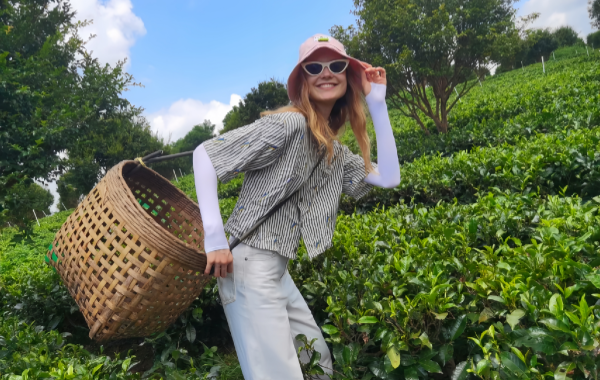
Tea Ceremony and Teaware Crafting: A Deep Dive into Intangible Cultural Heritage
Tea ceremonies and teaware crafting are integral parts of China's intangible cultural heritage, offering a profound understanding of the country's tea culture. Visitors can attend traditional tea ceremonies, such as the elegant Gongfu Cha in Fujian or the serene matcha ceremonies inspired by Japanese tea culture (which has its roots in Chinese tea traditions), led by skilled tea masters. These ceremonies emphasize the principles of harmony, respect, purity, and tranquility, guiding participants through a series of precise movements and rituals that enhance the tea - drinking experience. Additionally, tea - related tourism can include visits to workshops where artisans craft exquisite teaware, such as Yixing purple clay teapots, known for their ability to improve the flavor of tea over time. Travelers can observe the meticulous process of teapot making, from shaping the clay to firing and glazing, and even try their hand at creating their own simple teaware under the guidance of the craftsmen. This hands - on experience with teaware crafting provides a unique perspective on the artistry and craftsmanship that goes into every piece, further enriching the understanding of Chinese tea culture.
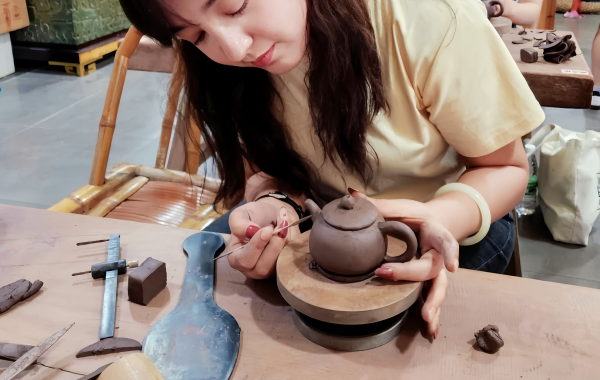
 Cultural and Philosophical Aspect
Cultural and Philosophical Aspect
Tea Ceremony and Spiritual Significance
The Chinese tea ceremony, or "Gongfu Cha," is a refined and ritualistic practice that highlights harmony, respect, purity, and tranquility. Each precise step, from warming the teapot to serving the tea, is carried out with grace and attention to detail, reflecting deep respect for both the tea and the guests. This ceremony transcends mere tea preparation; it serves as a spiritual experience that connects participants to the essence of tea culture.
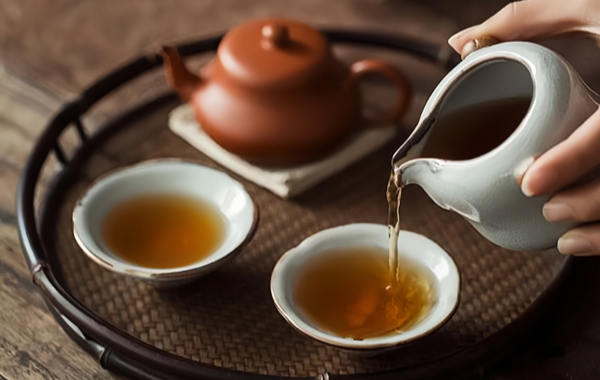
Tea in Literature, Art, and Poetry
For thousands of years, tea has been a prominent subject in Chinese literature, art, and poetry. Poets and writers have often used tea as a metaphor for simplicity, purity, and tranquility, expressing profound emotions and philosophical thoughts through their works. Paintings and calligraphy depicting tea - drinking scenes are abundant in Chinese art history, providing a visual representation of the deep cultural significance of tea in Chinese society. Tea - inspired poetry has also left an indelible mark on Chinese literary heritage, reflecting the enduring emotional connection between the Chinese people and this beloved beverage.
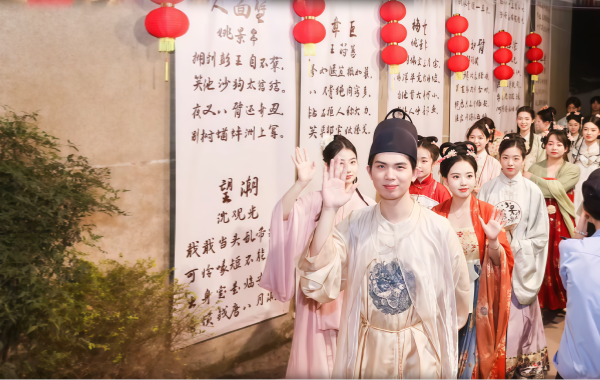
Tea Philosophy and Zen Buddhism
Tea and Zen Buddhism share a long - standing and intertwined relationship in China. The quiet and contemplative nature of tea drinking complements the Zen practice of meditation and mindfulness. Many Zen monasteries have their own tea gardens and tea - making traditions, and tea ceremonies are often incorporated into Zen religious rituals. This fusion of tea and Zen philosophy promotes inner peace, self - awareness, and a deeper understanding of the world.
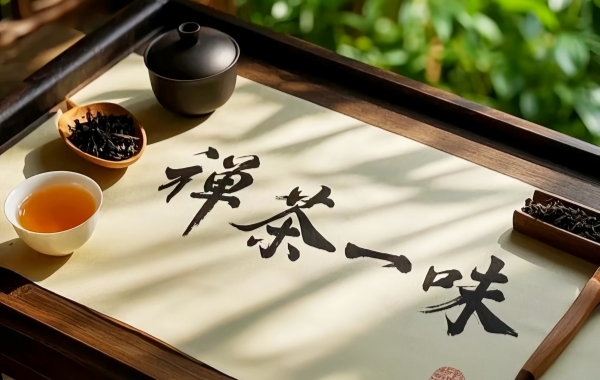
 Utensils and Craftsmanship Aspect
Utensils and Craftsmanship Aspect
Tea Utensils and Their Functions
Tea utensils play a crucial role in Chinese tea culture. They include teapots, teacups, tea trays, tea canisters, and tea tools, each serving a specific purpose in the tea - making and serving process. Teapots, often made from materials such as purple clay, porcelain, or glass, can influence the flavor of the tea. Teacups come in various shapes and sizes to enhance the drinking experience, while tea trays collect excess water, maintaining a clean and orderly tea - serving environment.
Tea Brewing Techniques and Innovations
The art of tea brewing has evolved over centuries, with various techniques and innovations developed to enhance the flavor and aroma of the tea. These include adjusting water temperatures, brewing times, and using different tea utensils. Additionally, there has been an exploration of new tea blends and flavor combinations to meet the changing tastes and preferences of consumers. For example, the use of specific water temperatures can bring out the unique characteristics of different tea varieties, while innovative brewing methods can create new and exciting tea experiences.
Tea Variety Innovation and Production
To cater to the diverse demands of consumers, the Chinese tea industry has continuously innovated in developing new tea varieties. This involves the cultivation of new tea plant hybrids, the exploration of different processing techniques, and the creation of unique tea blends and flavored teas. Modern tea production has also become more mechanized and standardized, ensuring consistent quality and safety while preserving traditional tea - making techniques and cultural heritage. For instance, new processing methods can improve the texture and taste of tea leaves, while the cultivation of new hybrids can result in teas with distinct flavors and aromas.
 Trade and Economic Aspect
Trade and Economic Aspect
Tea and International Trade
China is the largest tea - producing and exporting country globally, with Chinese teas exported to over 100 countries and regions. The international trade of Chinese tea not only brings significant economic benefits but also promotes cultural exchange and understanding between China and the world. As the demand for high - quality Chinese teas continues to grow in international markets, the Chinese tea industry is expanding its global reach and strengthening its position in the global tea trade.
Tea Collection and Investment Value
Some rare and high - quality Chinese teas, such as aged Pu - erh tea and vintage oolong teas, have become sought - after collectibles and investment items. Their value can appreciate over time due to factors such as rarity, quality, and historical significance. Collectors and investors are attracted to these teas not only for their potential financial returns but also for their cultural and historical value. The market for tea collection and investment is growing, providing new opportunities for the tea industry and investors alike.
The Future Prospects of the Chinese Tea Industry
Looking ahead, the Chinese tea industry is poised for continued growth and innovation. With increasing global demand for authentic and high - quality Chinese teas, as well as the ongoing exploration of new markets and consumer preferences, the industry is expected to expand further. The development of tea tourism, which offers visitors the opportunity to experience China's rich tea culture firsthand, is also contributing to the growth of the industry. Additionally, the focus on sustainable tea production and environmental protection will ensure the long - term viability of the Chinese tea industry, making its future bright and promising.
Contact Us
What Our Clients Say?
Based on 10,000+ traveler reviews












